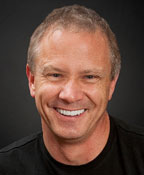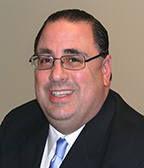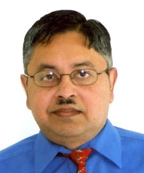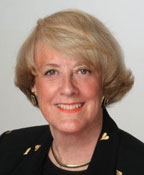 |
|
Jeff T. Blank, DMD |
INTRODUCTION
There is possibly nothing more frustrating in the practice of dentistry than struggling with retaining single unit provisional restorations. It is both embarrassing for the dentist and a huge inconvenience for the patient to return to the office to recement a temporary. Most dentists will agree that aside from dental pain, many if not most of after-hours calls are related to dislodged temporary restorations.
CLINICAL TIPS
This short article will present a few clinical tips for ensuring that single unit provisional restorations not only stay put for the interim period prior to final crown delivery, but assist in reducing final restoration adjustments as well as ideal tissue health and patient comfort:
Clinical crown height and classic retention and resistance form are imperative for adequate provisional retention. Personally, I constantly feel the need for the double cord technique if for no other reason than to get as much apical migration of tissue to permit a decent prep height. This is particularly true with maxillary and mandibular second molars. Rarely is there enough clinical crown height above/below the retromolar pad and tuberosity area to get more than a few millimeters of prep height on the distal of these teeth. I certainly am cognizant of the fact that if you are using a bonded restoration, it is not always necessary to have much clinical prep height for the final ceramic restoration, but you are setting yourself up for problems when it comes to retaining the provisional restorations.
Retention and resistance form are both things we all know and appreciate, so I won’t expand on those concepts per se. However, I have found over my 21 years of practice that when I was not routinely replacing all previously existing amalgams/composites prior to or during the prep, pieces would fall out etc… during the prep and I would have the tendency to try to cut a box or basically “go with it” in terms of retention and resistance form. As I began using all ceramic crowns, especially those that must be bonded in rather than cemented, it became essential of course to remove all amalgam. When an adequate new core is placed, ideal prep form is easily achievable and along with packing cord or using a diode laser to increase prep height, these key issues were routinely addressed.
Lastly and probably most importantly, developing functional occlusion with no working or non-working interferences is a key factor in contributing to temporaries falling off. Most, if not all, of us delegate provisional fabrication to our assistants. I think it is essential that we really sit down and educate our assistants in not only how to make a good provisional index (several great methods exist), we must assist them in developing a working knowledge of dental morphology and occlusion. Several great books exist (the best are lab technician books) that do more than show basic primary posterior anatomy and illustrate the importance of developing proper cuspal inclines and the role these play in occlusion. Simply taking a preoperative dual-arch tray impression of the damaged tooth to be crowned is rarely sufficient in rendering a provisional that meets the demands of morphology and occlusion. More adept assistants are more than eager to learn techniques to correct the occlusion and morphology of the tooth prior to impressing for the index and this can be easily taught to them using a little bit of self-etching bonding resin and composite. Even if the assistant is sub par, we can certainly do it for them in minutes while the patient is getting numb. The key is for the whole clinical team to recognize those teeth that are occlusally unsound (working/non working interferences, lack of sufficient cusp contact etc…) by simply using articulating paper prior to impressing for the index. Once this becomes routine, then you will also see that in those cases where there is sound occlusion, you will want to replicate those contacts in the provisional. Failing to maintain healthy occlusal contacts lead to just as many problems as not recognizing occlusal interferences. How often have we had patients complain that the adjacent nonrepaired teeth were sore because we left our temps out of or light in occlusion, not to mention the potential of supereruption and the woes of excessive occlusal adjustment of the final crown as the result? I would go as far as to say that not checking working and nonworking interferences are probably the largest single contributor to temps coming off…so it is imperative that we teach this or check every temp ourselves.
I opened with the teaser that we rarely use temp cement. When the above factors are addressed, placing Gluma desensitizer on the tooth, drying and “shrink wrapping the provisional is often more than sufficient. The key there of course is assuring that excess acrylic doesn’t get below the gum line interproximally less we have a bloody mess at delivery. Small disposable interproximal brush sticks (ie, Soft-Picks [Sunstar]) should easily pass interproximally and the patient should be instructed to use them rather than floss while wearing the temp. The only time we use provisional cement is when frankly I have violated all or most of the above, or when the temp doesn’t “shrink wrap” comes off with the index or pre-op impression. Then we just add a light layer of flowable, reseat, clean excess with a brush, light cure and we’re done. Occasionally, we will use a temporary cement like TempSpan Translucent (Pentron Clinical Technologies) or an old favorite, calcium hydroxide paste (Dycal [DENTSPLY Caulk]). Of course, no one is perfect and we have had better luck using a resin-reinforced glass ionomer (such as Rely X [3M ESPE]) and prefer the click-it dispenser rather than mixing a polycarboxylate powder and liquid (such as Durelon [3M ESPE]), and my opinion, is easier to clean off. Nothing is more frustrating to the office and patient more than a temp coming off multiple times while waiting for a crown. I think simply paying attention to the above details pays off royally and sets up fast and efficient removal of the temp and excellent tissue health while minimizing occlusal adjustments.
Dr. Blank graduated from the Medical University of South Carolina, College of Dental Medicine in 1989, and maintains a full time private practice in Rock Hill, South Carolina where he emphasizes complex restorative reconstruction and cosmetic enhancement procedures. He holds an adjunct instructor post in the Department of General Dentistry at Medical University of South Carolina, College of Dental Medicine and has authored dozens of clinical manuscripts on a variety of clinical techniques and materials. He is a Fellow in the Academy of Comprehensive Esthetics, and an active member of the International Association for Dental Research, the Academy of Operative Dentistry, the American Academy of Cosmetic Dentistry, the Pierre Fauchard Academy, ADA, and AGD. Dr. Blank has lectured throughout the United States, Europe and in 9 countries in Asia, holds US Patent for a composite finishing instrument and is the creator of the C.E.B.L. Technique for direct veneer layering. He can be reached at jblank@comporium.net or visit carolinasmilecenter.com.










